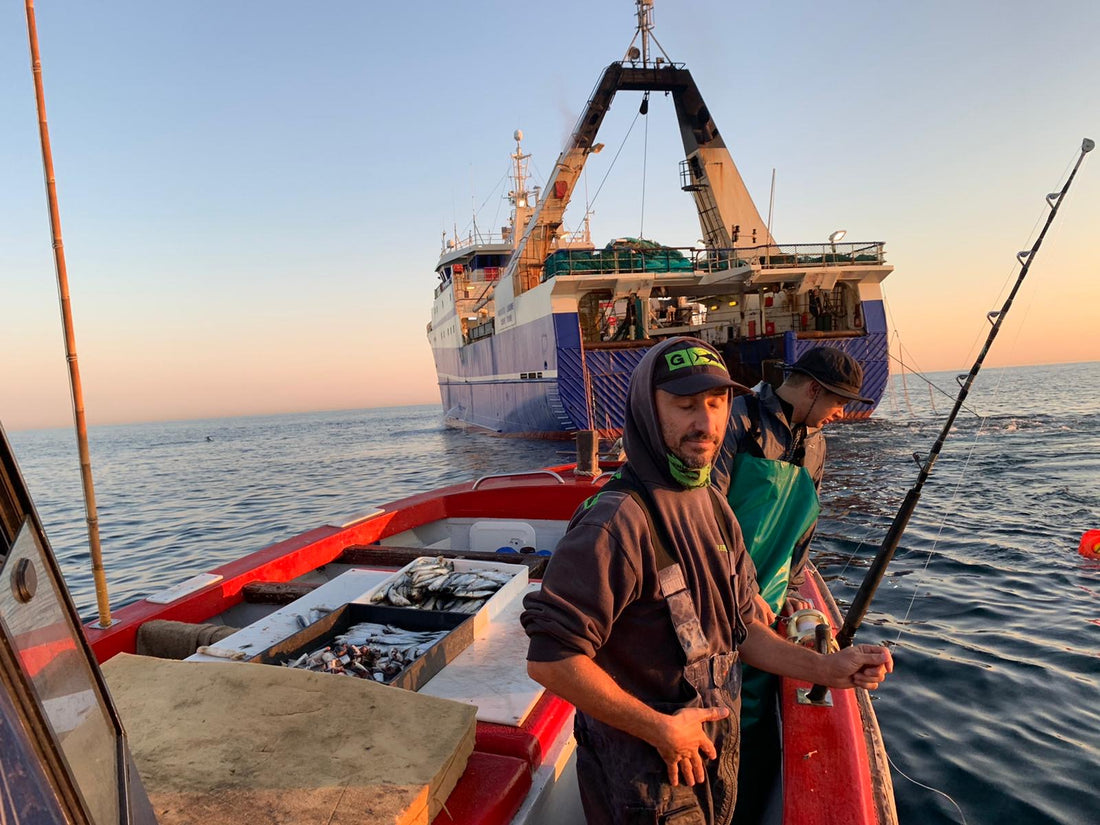
Conspira-SEA
Share
In a world where information, true and false, is at our fingertips, and where we make decisions based on the information plated in front of us, it’s very easy to get caught up in a moment and be lead down an emotional rollercoaster that the producer of a film is laying in front of you.
The latest Netflix documentary Seaspiracy regarding the ocean that is getting lots of media attention, although being heavily one sided, does a great job of creating awareness that we do need to do something towards our ocean’s health for it to be able to sustain itself into the future as a food security option for everyone.
I agree that more can be done to stop plastics from entering the oceans, the limiting of single use plastics and reduction of mass fishing style operations that indiscriminately take everything in its path. However, the message of “don’t eat fish” by the film maker is somewhat harsh and overlooks the many small scale fishermen and individuals that are custodians of the ocean and doing things the right way. A message of taking note of where and how your seafood is caught is of great benefit in educating consumers who are the ones that ultimately drive market change.
While many of the facts presented in this film are not accepted by the greater ocean scientific community, the notion that there is no definition on the word “sustainable” or any sustainable fishing practices and fisheries is simply not true.
A sustainable fishery is one that continues to produce food into the future at an undiminished rate. There is a maximum sustainable yield on fish stocks, and we should be restricting fishing to below these levels to have balance for the future.
There are many fisheries that fall into this category, especially those where the catch method is by one hook and line, catching a single fish at a time. Small scale fishermen take out a percentage of a school of fish, allowing the others to go on and breed for the following years. In comparison, large industrial methods that take out entire schools of fish and anything else that may be in the way, and decimate the entire school, eliminating any future breeding potential.
A single industrial purse seine fishing vessel catches an average of 20 - 50 tons per set and potentially up to 200 tons per set twice a day. That’s more fish in a day than an entire South African community ski boat/ small scale fishing fleet in a whole year. These fisheries should not be lumped together and painted with the same brush as they have vastly different impacts on the ocean.
Responsible one-by-one fishing methods including pole-and-line, rod-and-line, handline and trolling have:
- No habitat or sea bed damage
- No ghost fishing gear
- No by-catch
- Each hook and line is consistently manned by the fisherman
- Does not lead to overfishing of a fishery as this is a very low intensity method
- More Jobs are created per ton of fish harvested - very labour rich practices
- Quality improvement as each fish is handled as an individual
- Catch is highly selective and only the targeted species is caught
- Cultural importance in coastal communities is retained
- Local ownership and typically these small-scale fishermen support local businesses and generating local and community wealth
Fish by nature lay millions of eggs, knowing that not all the babies will survive. If we are only fishing in this surplus that nature provides we would be ok. Unfortunately there are many dark areas of the fishing industry that need improvement, areas of illegal fishing, poor fishing practices and human rights abuses. These are areas of concern that, if tackled, would go a long way in getting our ocean stocks healthier.
Cyrill Gutsch, founder of Parley for the Oceans, says:
“it’s the total industrialization of the fishing industry that is the problem”.
Despite the film’s one-sided views and having been set out to play on one’s emotions, I feel it has done something amazing for the ocean. It’s started conversation. The more consumers that are asking questions about where and how their seafood comes from and is caught, the greater the drive for transparency will be. It has outlined the harm massive/ industrial types of fishing is having on the ocean and that we should be in support of the smaller methods.
As individuals we can also do our part in helping. With around 80% of all plastics in the ocean derived from land, we can all start a great change by simply doing our little bit. Been thoughtful of what we buy, how it is packaged, reusing plastics where possible, limiting single use plastics and choosing to eat produce that has a lower impact.
If you really want to positively influence the sustainability of the oceans, rather than giving up seafood altogether, ask this all important question: How was this fish caught?
Support pole and line, rod and line and handline that support local communities. Use your consumer power to start the change.
At the end of they day our choices do make a difference, and we can all do our bit daily to help our beautiful planet.

2 comments
I am interested in your pricing and whether your salmon is available in East London.
Hi there.
I find your response to the article very interesting. I was a pescetarian before watching the documentary and I have to admit, I was very disturbed to see the destruction caused by mass fishing, and I’ve not touched any seafood since.
Can you please confirm whether there descriptions of waste produced in fish farming is accurate.
And can you also describe the size of the fishing vessels used by your company, as I assume that the distinction between wild caught and not, can be quantified in some way therein